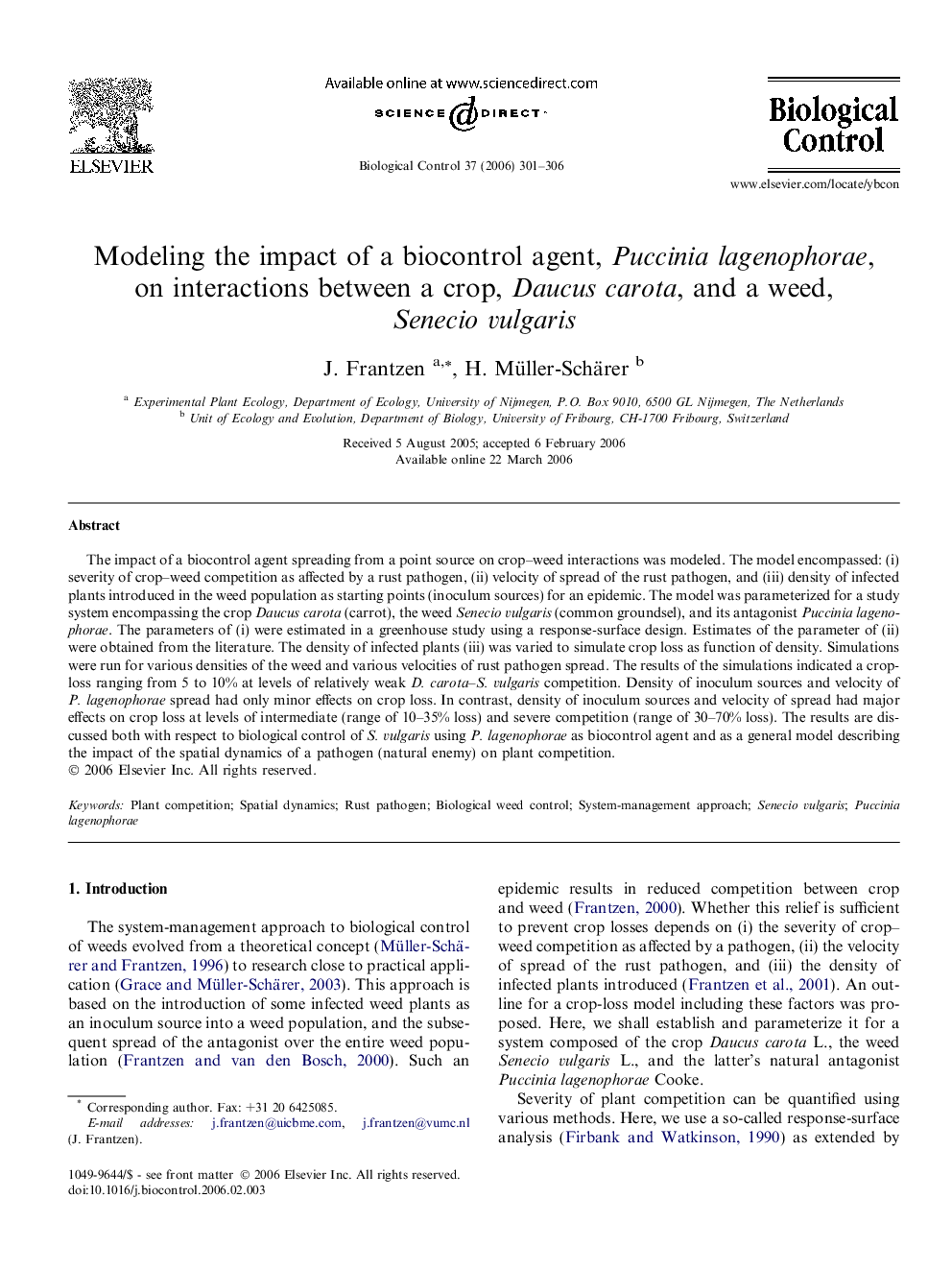| Article ID | Journal | Published Year | Pages | File Type |
|---|---|---|---|---|
| 4505342 | Biological Control | 2006 | 6 Pages |
The impact of a biocontrol agent spreading from a point source on crop–weed interactions was modeled. The model encompassed: (i) severity of crop–weed competition as affected by a rust pathogen, (ii) velocity of spread of the rust pathogen, and (iii) density of infected plants introduced in the weed population as starting points (inoculum sources) for an epidemic. The model was parameterized for a study system encompassing the crop Daucus carota (carrot), the weed Senecio vulgaris (common groundsel), and its antagonist Puccinia lagenophorae. The parameters of (i) were estimated in a greenhouse study using a response-surface design. Estimates of the parameter of (ii) were obtained from the literature. The density of infected plants (iii) was varied to simulate crop loss as function of density. Simulations were run for various densities of the weed and various velocities of rust pathogen spread. The results of the simulations indicated a crop-loss ranging from 5 to 10% at levels of relatively weak D. carota–S. vulgaris competition. Density of inoculum sources and velocity of P. lagenophorae spread had only minor effects on crop loss. In contrast, density of inoculum sources and velocity of spread had major effects on crop loss at levels of intermediate (range of 10–35% loss) and severe competition (range of 30–70% loss). The results are discussed both with respect to biological control of S. vulgaris using P. lagenophorae as biocontrol agent and as a general model describing the impact of the spatial dynamics of a pathogen (natural enemy) on plant competition.
